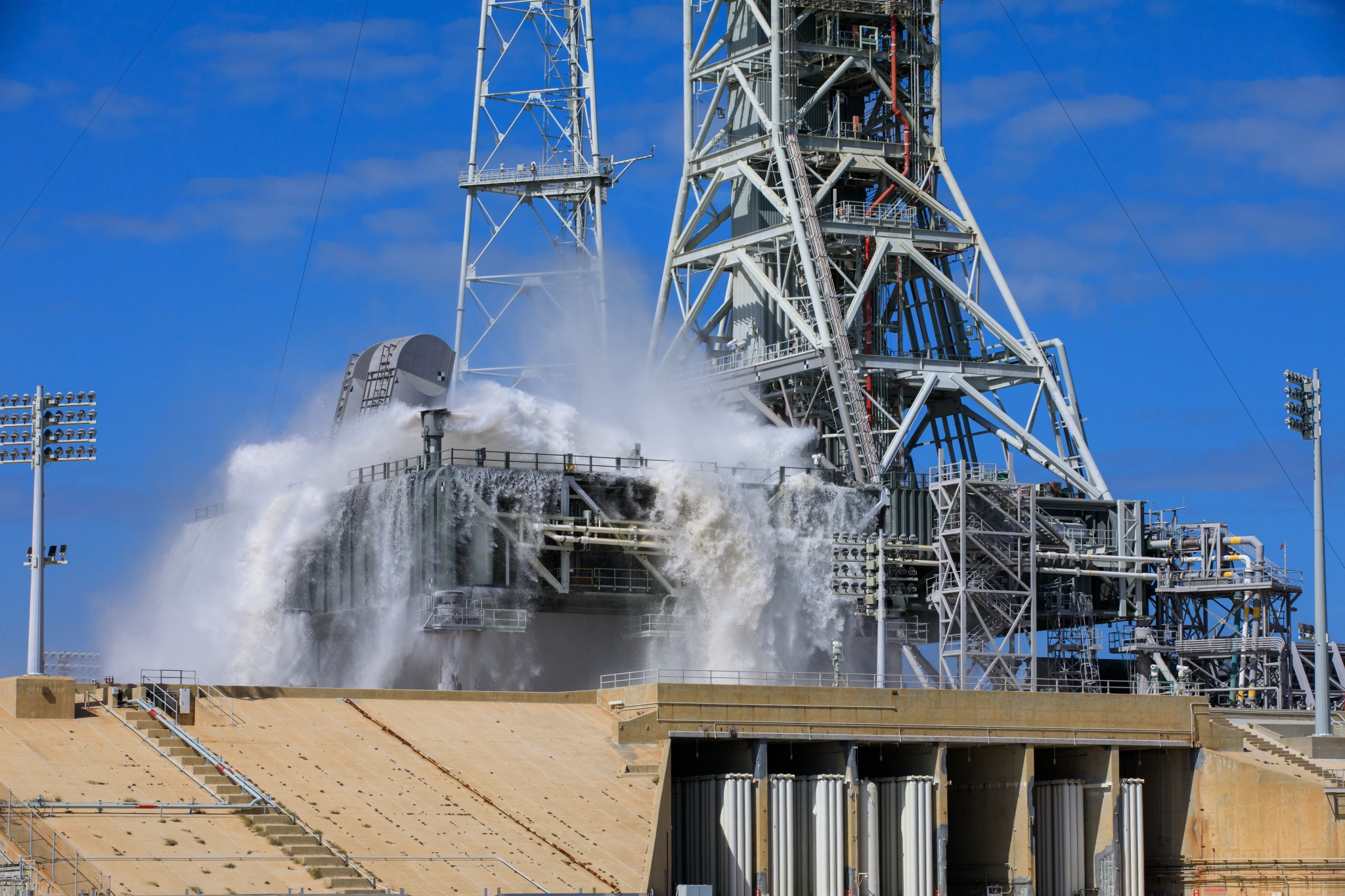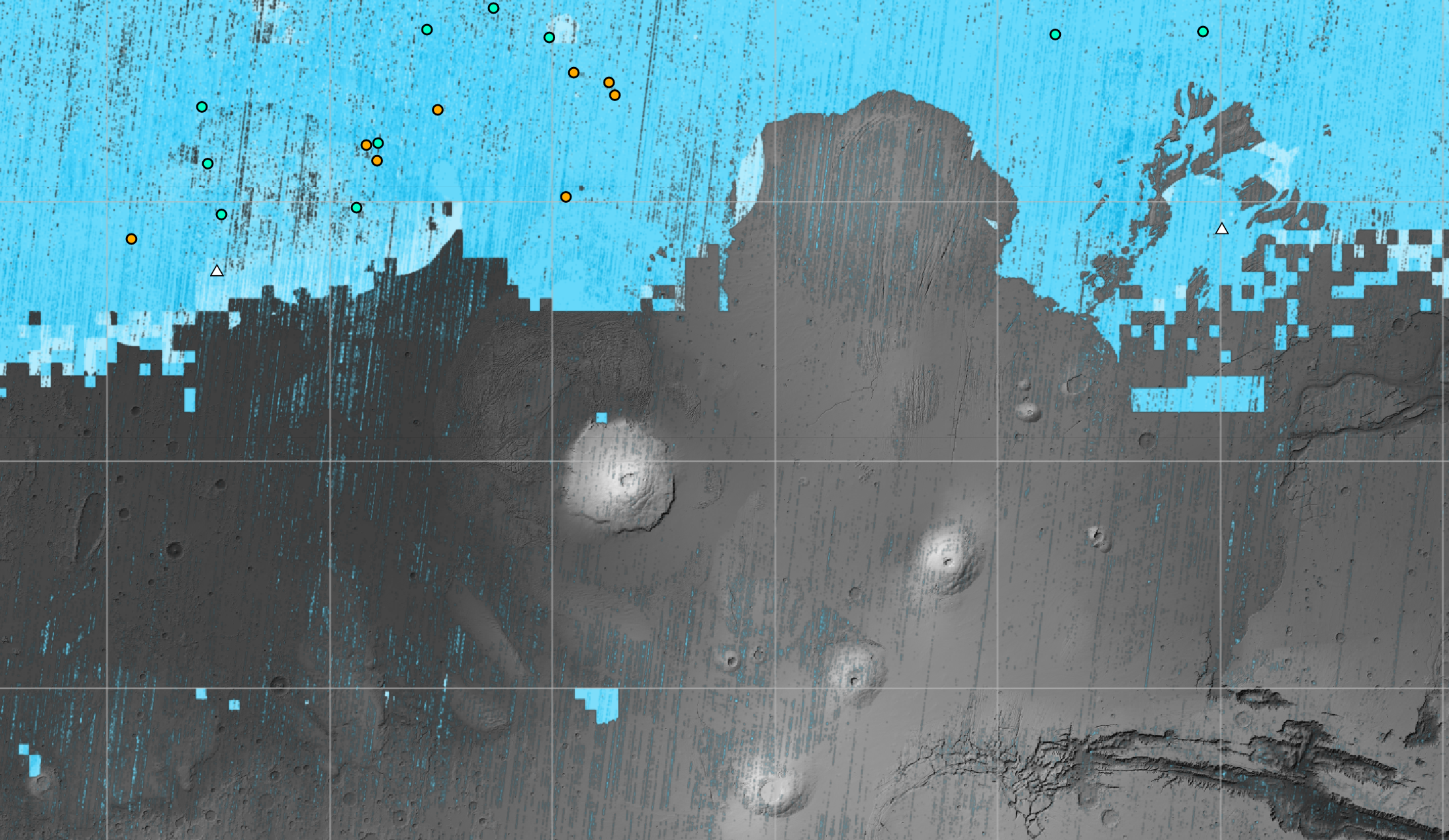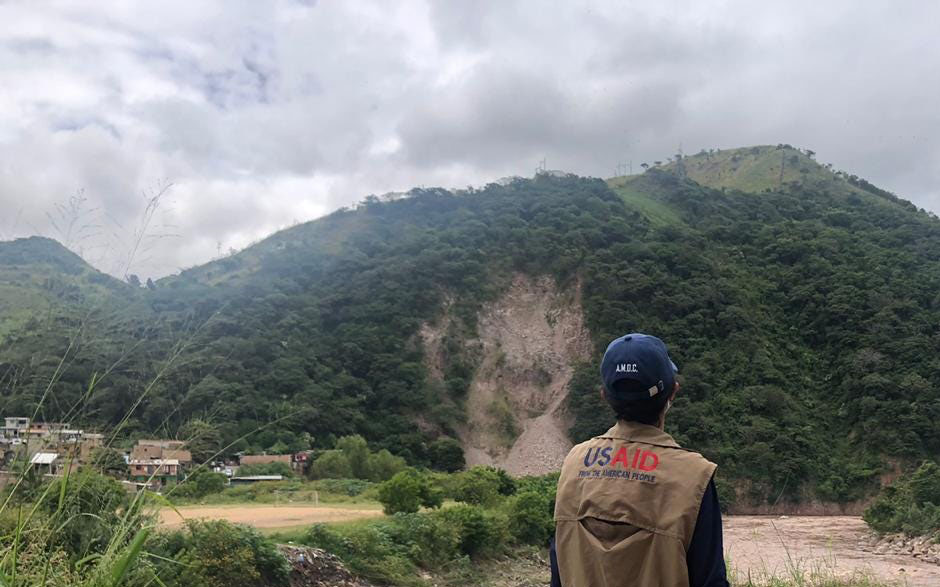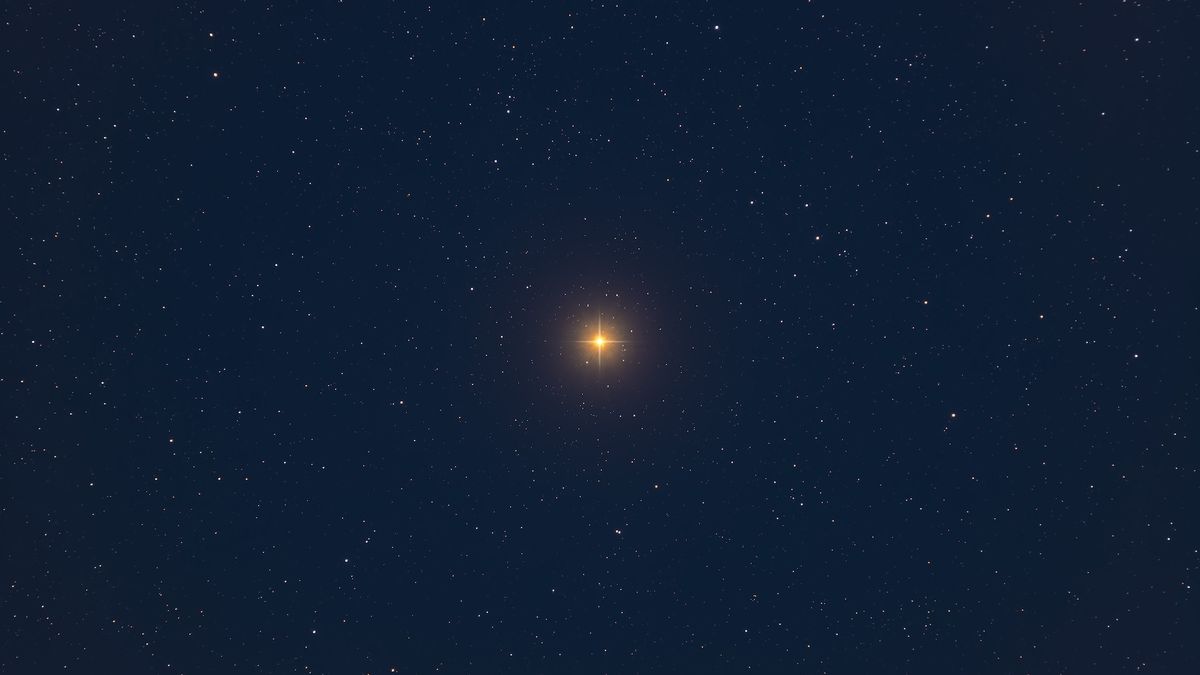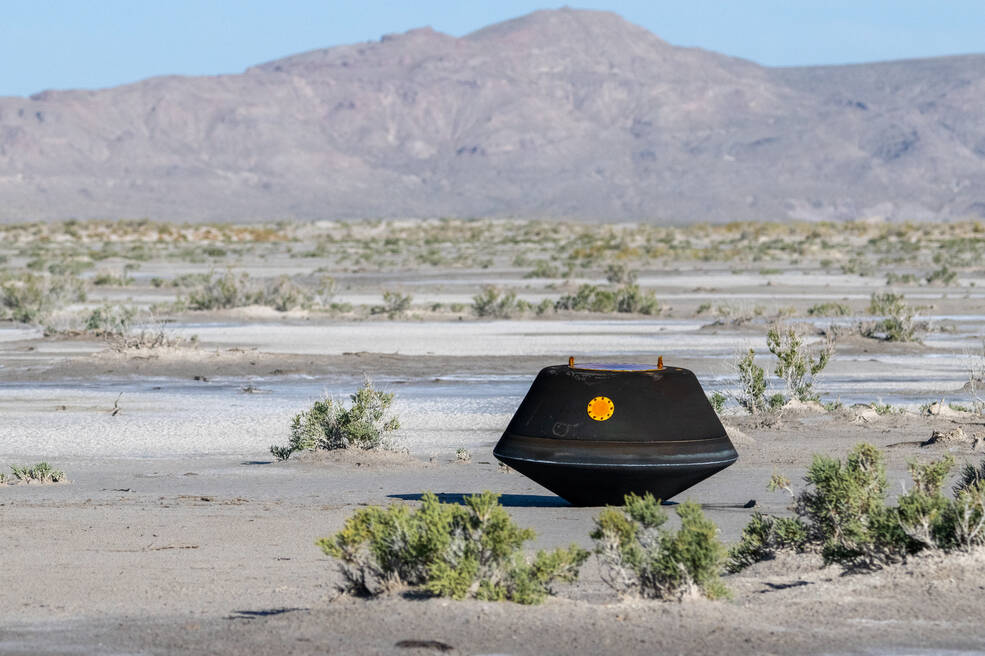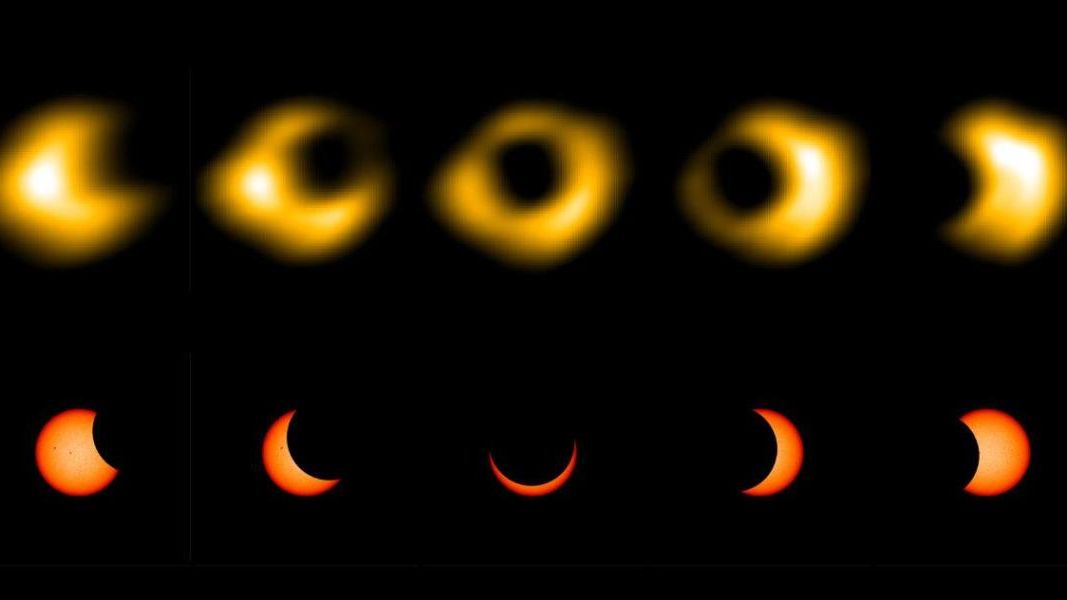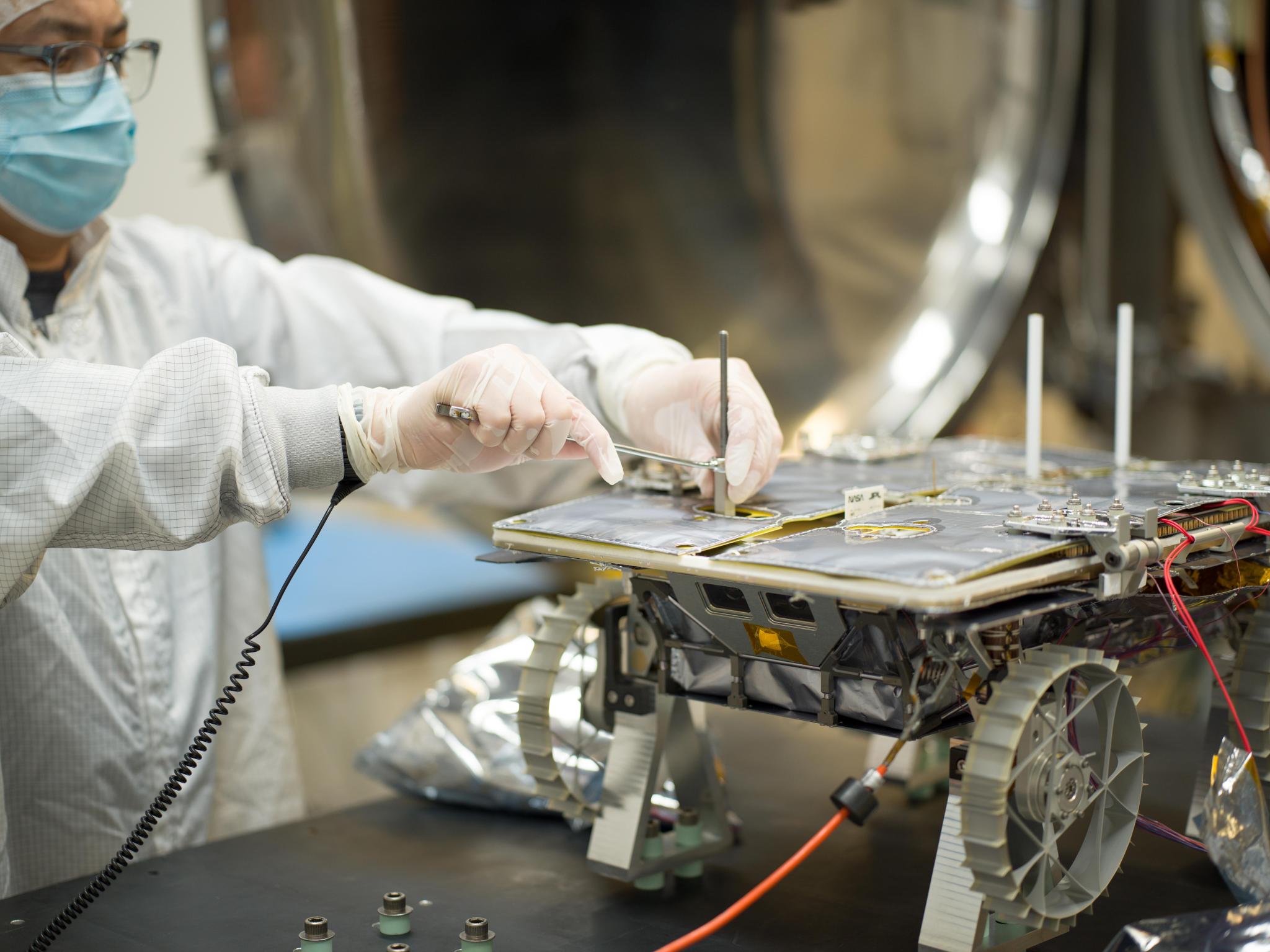NASA / Kim Shiflett NASA’s Exploration Ground Systems conducts a water flow test with the mobile launcher at NASA’s Kennedy Space Center’s in Florida on Oct. 24, 2023. It is the third in a series of tests to verify the overpressure protection and sound suppression system is ready for launch of the Artemis II mission. During liftoff, 400,000 gallons of water will rush onto the pad to help protect NASA’s Space Launch System rocket, Orion spacecraft, mobile launcher, and launch pad from any overpressurization and extreme sound produced during ignition…
Read MoreMonth: October 2023
NASA Is Locating Ice on Mars With This New Map
The blue areas on this map of Mars are regions where NASA missions have detected subsurface water ice (from the equator to 60 degrees north latitude). Scientists can use the map – part of the Subsurface Water Ice Mapping project – to decide where the first astronauts to set foot on the Red Planet should land. NASA/JPL-Caltech/Planetary Science Institute These Mars global maps show the likely distribution of water ice buried within the upper 3 feet (1 meter) of the planet’s surface and represent the latest data from the SWIM…
Read MoreNASA, Pacific Disaster Center Increase Landslide Hazard Awareness
5 min read NASA, Pacific Disaster Center Increase Landslide Hazard Awareness Communities worldwide now have access to a powerful tool to increase their awareness of landslide hazards, thanks to NASA and the Pacific Disaster Center. A humanitarian worker from USAID observes the impacts of a landslide. USAID deployed an elite Disaster Assistance Response Team on Nov. 17, 2020, to lead the U.S. response to Hurricanes Eta and Iota. USAID’s Bureau for Humanitarian Assistance After years of development and testing, NASA’s Landslide Hazard Assessment for Situational Awareness model (LHASA) has been…
Read MoreCommander Callie Continues Moon Mission in NASA’s New Graphic Novel
“Astronaut Callie Rodriguez continues her space adventures as the first woman to walk on the Moon in NASA’s new graphic novel, “First Woman: Expanding Our Universe.” Fictional astronaut Callie Rodriguez continues exploring space as the first woman to walk on the Moon in a new issue of NASA’s First Woman graphic novel series. Now available digitally in English and Spanish, “First Woman: Expanding Our Universe,” follows Callie and her crewmates as they work together to explore the unknown, make scientific discoveries, and accomplish their mission objectives. This second issue of the…
Read MoreAWE Launching to Space Station to Study Atmospheric Waves via Airglow
4 min read AWE Launching to Space Station to Study Atmospheric Waves via Airglow NASA’s Atmospheric Waves Experiment, or AWE, mission is scheduled to launch to the International Space Station in November 2023, where it will make use of a natural, ethereal glow in Earth’s sky to study waves in our planet’s atmosphere. Built by Utah State University’s Space Dynamics Laboratory in North Logan, Utah, AWE will be mounted on the exterior of the space station. From this perch, AWE will stare down toward Earth, tracking undulations in the air…
Read MoreThe West Antarctic Ice Sheet is melting, and it’s too late to stop it
It’s not looking good for the West Antarctic Ice Sheet. This body of ice is Antarctica’s largest contributor to global sea-level rise, and it’s only going to get worse from here. After running multiple simulations, researchers determined that increased melting of the sheet will be unavoidable throughout the rest of the century. Scientists previously hypothesized that a reduction in greenhouse gas emissions could mitigate the warming of the Amundsen Sea, which contributes to melting of the West Antarctic Ice Sheet. That hypothesis has now been put to the test. Related: Antarctic…
Read MoreThe mysterious dimming of supergiant star Betelgeuse may finally be explained (photo)
Can a star bounce back from the verge of death? One star did — or at least appeared to. In early 2019, the red supergiant Betelgeuse began to dim. Some observers predicted that the dimming was a harbinger of the star’s end: That it was the first warning sign that Betelguese was about to go supernova. Astronomers are now certain that isn’t true. Images released by the European Southern Observatory (ESO) on Monday (Oct. 23) clearly show Betelguese returned to normal after the event. Related: Is the puzzling star Betelgeuse…
Read MoreNASA Improves GIANT Optical Navigation Technology for Future Missions
As NASA scientists study the returned fragments of asteroid Bennu, the team that helped navigate the mission on its journey refines their technology for potential use in future robotic and crewed missions. The optical navigation team at NASA’s Goddard Space Flight Center in Greenbelt, Maryland, served as a backup navigation resource for the OSIRIS-REx (Origins, Spectral Interpretation, Resource Identification, and Security – Regolith Explorer) mission to near-Earth asteroid Bennu. They double-checked the primary navigation team’s work and proved the viability of navigation by visual cues. The sample return capsule from…
Read More1st-ever radio images of an annular solar eclipse showcase the sun’s extended corona
Your social media feeds might’ve been filled over the past couple of weeks with photos of the recent “ring of fire” annular eclipse, which crossed the western U.S. on Oct. 14. But it wasn’t just photographers who imaged the celestial event. Scientists from the New Jersey Institute of Technology’s Center for Solar-Terrestrial Research (NJIT-CSTR) used the new Owens Valley Radio Observatory Long Wavelength Array (OVRO-LWA) in California to capture the first-ever radio images of an annular solar eclipse. Using a set of 352 antennas measuring radio wavelengths between approximately 20…
Read MoreReadying a Little Rover
NASA/JPL-Caltech An engineer prepares a small rover for testing in a thermal vacuum chamber on Oct. 24, 2023, at NASA’s Jet Propulsion Laboratory in Southern California. This rover is part of the agency’s Cooperative Autonomous Distributed Robotic Exploration (CADRE) technology demonstration that’s headed to the Moon as part of the Commercial Lunar Payload Services initiative. CADRE is designed to demonstrate that multiple robots can cooperate and explore together autonomously – without direct input from human mission controllers. Learn more about these miniature rovers. Image Credit: NASA/JPL-Caltech
Read More